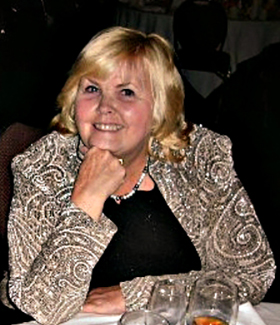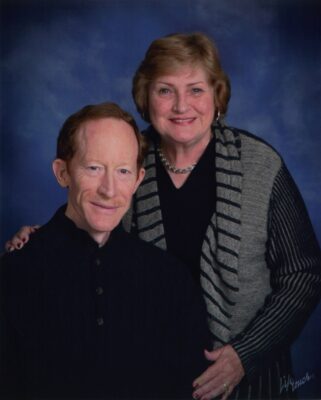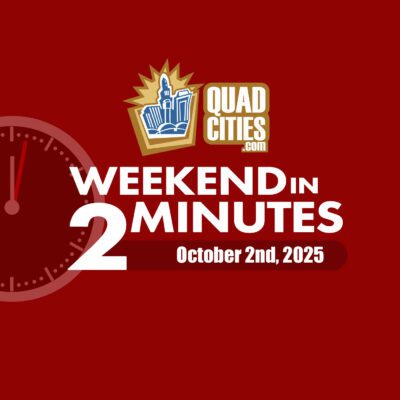‘Tenet’ A Beautiful, Big Scale Mind Bender
Director Christopher Nolan started tinkering around with the concept of time many years ago on a much smaller budget with 2000’s “Memento.” I liked it so much that, on a visit to the Twin Cities, I took a girlfriend and her husband to see it, my second time through it. It was unique, original, interesting, exciting and it didn’t run 150 minutes. It was even nominated for Best Original Screenplay at that year’s Oscars.
We’ve now been treated to “Memento’s” successors from Christopher Nolan: “Insomnia (2002); “The Dark Knight Trilogy” (2005-2012); “The Prestige” (2006); “Inception” (2010 (8 Oscar nods); “Interstellar” (2014); and Dunkirk (2017) (nominated for Best Picture and Best Director). No less an authority than Martin Scorsese said, “Christopher Nolan creates beautifully made films on a big scale.”
Nowhere is that scale more evident than in “Tenet,” which was budgeted at $205 million. It filmed in Estonia, Italy, the UK, Denmark, India, Norway, and cities such as Kiev, Mumbai, Washington, London, and Oslo.
The battle action scenes recall “Dunkirk.” The espionage plot summons memories of “Inception.” A whole lot of people talking through masks echoes “Bane” in The Dark Knight Rises.” (We learn that the reason so many people are wearing masks is that, if you go back through time, you have to take your own air and try not to come into contact with your former self.)
 Oddly enough, I actually wrote an entire novel for Lachesis Press (Nova Scotia) where the hero travels back through time (“Out of Time”). The original plot premise was not mine, but a collaborator’s, who then disappeared, writing only one page of the entire two hundred and fifty and giving a whole new meaning to the term “collaboration.”
Oddly enough, I actually wrote an entire novel for Lachesis Press (Nova Scotia) where the hero travels back through time (“Out of Time”). The original plot premise was not mine, but a collaborator’s, who then disappeared, writing only one page of the entire two hundred and fifty and giving a whole new meaning to the term “collaboration.”
Time travel as a theme presented many unique difficulties (which I was on my own to figure out). Considering that I dropped out of Physics in high school after Day One, imagine how thrilled I was to read about wormholes and other arcane concepts. Even though I was a fan of television’s “Fringe” when it was on the air, love the works of Philip K. Dick, and have watched numerous films where characters travel through time (“Time After Time,” “Déjà Vu,” “Looper,” “Somewhere in Time,” “12 Monkeys,” et. al.). I remember asking that very question of my instructor in a screenwriting class dedicated to turning my novel into a film script.
“Can a person from the future confront himself in the past?” I asked.
My professor said, “Nobody has ever traveled through time, so do whatever you want.”
Wise words.
My hero (Dante) did confront and speak to himself in the past, and I will reveal one tiny spoiler by telling you that John David Washington confronts himself in a fight scene, because I know that revelation will not ruin the scene for you.
Playing around with time is not a new concept for Nolan. “Memento,” his break-through film, did just that. However, it was far easier to understand what was going on in “Memento” than it is in “Tenet.”
My notes include this phrase: “Color me confused.”
One critic, in a waggish moment, commented on John David Washington’s facial hair by saying that it probably grew there while he was waiting for Nolan to explain the plot to him. The script line I wrote down indicated that the plot has to do with trying to prevent WW III by using a type of inverse radiation manufactured by fusion. (If that confuses you, join the club.) Another film critic, Mark Keronode, said of Nolan that he is “living proof that you don’t have to appeal to the lowest common denominator to be profitable.”
This, as it turns out, is predictive, as the film has already managed to eke out two and one-half million more dollars than it cost. But it is not the entertaining, original film that garnered Best Original Screenplay Oscar nominations for Nolan. World-wide, the film has made back its considerable investment. It had the potential to be a studio-bankrupting movie like “Heaven’s Gate,” but it is garnering critical appreciation for the scope of the project, at least, and is currently about breaking even, with a worldwide take of $207,500,000.
I’m not going to explain the opening, set in the Kiev Opera House, because to do so would be a spoiler, but suffice it to say that it sets up the first of many magnificent settings. I kept thinking of the tour of locations used in “Game of Thrones.” I wish there was such a tour of the various sets used in “Tenet.”
Others have said the non-stop action, coupled with the gobbledy-gook explanation(s), reminded them of a James Bond movie. To them, I say, “Fair enough.” But with Bond you often got memorable musical themes like “Goldfinger’ or “Live and Let Die.” Here we are saddled with a pounding often-overly-loud and not-very-melodic score by Ludwig Goransson. [The composer’s name says it all.]
The cinematography by Hoyte Van Hoytema is gorgeous and the film does confirm that, as “Variety” said, Nolan is “the premier big-canvas storyteller of his generation.” “Tenet” also confirms Michael Mann’s verdict on Nolan as “a complete auteur” but the overly complicated explanations just bore the bejesus out of the audience.
So, everything is going backwards in this film. We’re going to learn about the Grandfather Paradox (don’t ask) and reversing time and hear lines of dialogue like, “Each generation looks after its own survival,” and “You have a future in the past.” There will be discussions about the meaning that will rival the interpretations of the meaning(s) of the ending of “12 Monkeys” (1995), a Bruce Willis time travel opus.
John David Washington is dubbed “the protagonist” in this one. He gets no actual character name. This bit was just used in another Bruce Willis film (“Hard Kill”) where my podcast guest of last week, Sergio Rizzuto (aka, the bad guy) was simply referred to as “the Pardoner,” but at least in that film the explanation involved ripping off The Canterbury Tales. Here, it is what it is, without any explanation.
John David Washington (son of Denzel; star of “BlackKlansman”) partners with Robert Pattinson (“Twilight”) as Neal, his partner, in this one. The female co-star is a blonde 6’ 2” actress named Elisabeth Debicki. Since Washington only stands 5’ 9” and the female lead is three inches taller and wearing three inch heels most of the time, she appears freakishly tall in many scenes. I have a theory that she was cast in the part because she was one of the few actresses tall enough to be able to extend her leg from the back seat of a car and unlock the door lock with her toes without moving from the back seat. This could be wrong, but that’s my story and I’m sticking to it.
Debicki’s character “Kat” is married to international arms dealer and all-around bad guy Richard Branagh as Andrei Sator. She tries to kill him twice. As they say, no love lost here. Kat loathes her abusive husband, but they have a son (Max) and she is being blackmailed into staying with Andrei via threats that she will lose her son if she doesn’t do exactly what he says. On a very basic level, “Tenet” is about the extremes of absolute power.
Debicki displays very little warmth in the exchanges with her small son, and his part is so small that he doesn’t even rate a line. There is also no chemistry or love story between the Amazonian Kat and Washington, so the obligatory “I must go back through time to rescue Kat” struck me as a not-very-convincing old trope. For that matter, so was the “small weapon that can inexplicably end the world somehow” a concept used before.
I had just reviewed a Bruce Willis shot-in-Cincinnati movie currently streaming (“Hard Kill”) in which there is a mysterious weapon that could end the world as we know it; the weapon was about the size of a pack of cigarettes. I complained then that how it worked was never clear and commented on its size. This film features another small weapon and the need to gather all the digits of an algorithm to activate whatever it does, which is never quite clear, although it is explained to us over and over and over.
“Tenet” spends roughly two hours of its 150-minute run time explaining what is happening, why it is happening, and what might happen next.
So much for “Show, don’t tell.”
Despite those lengthy explanations, the movie is still incredibly difficult to follow. Scene after scene of Washington, Pattinson, Branagh, and Debicki trying to convey the plot becomes exhausting.
It’s “Tenet’s” biggest failing and, while its cinematography, sets, most of its acting and its non-stop action are impressive (especially the highway chase scenes that run backwards), it comes off as an overlong exhausting effort.













Leave a Reply
You must be logged in to post a comment.